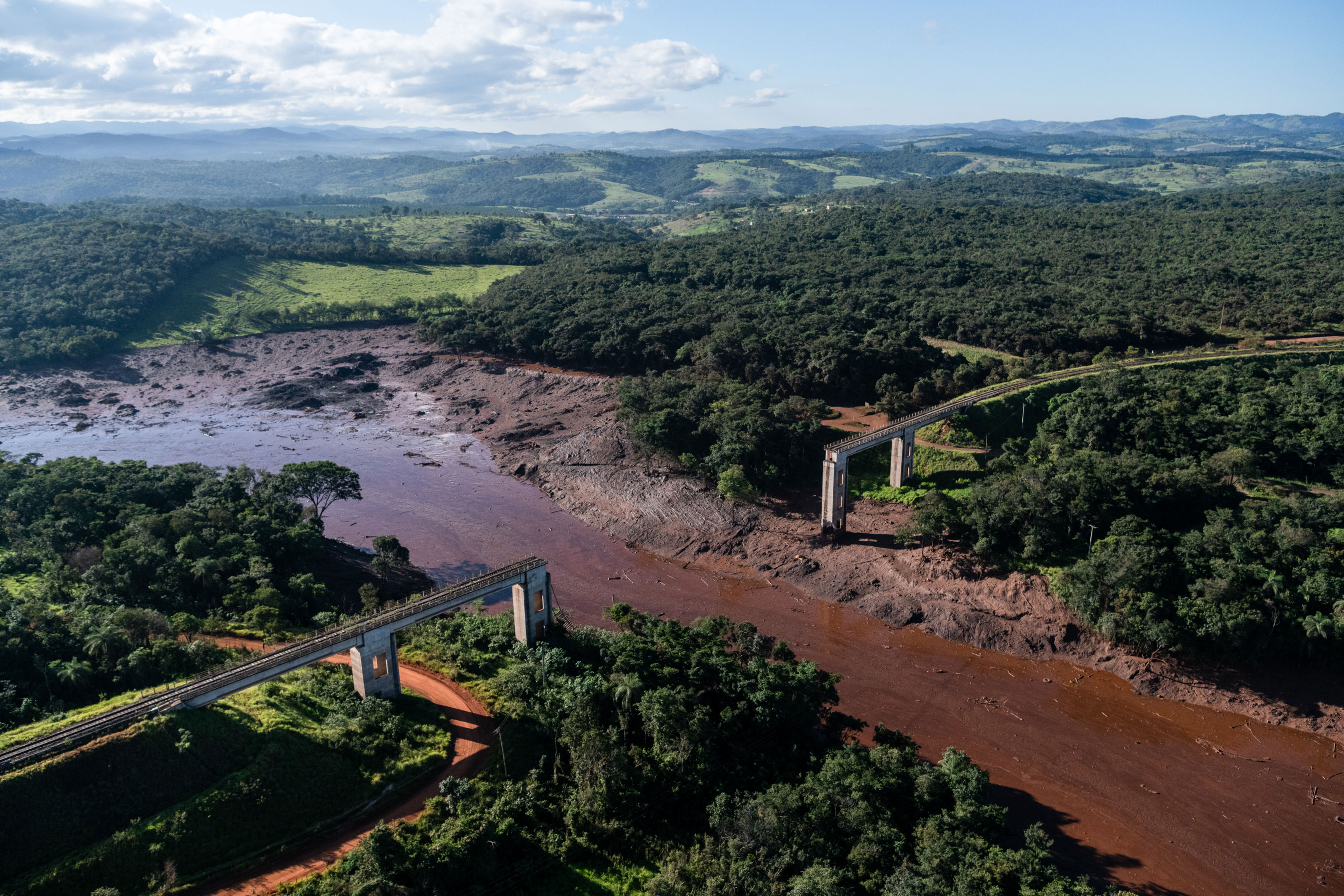Height and volume determine how dangerous a dam failure can be
When a mining dam burst in Brazil in 2019, nearly ten million cubic meters of toxic sludge surged down the valley, claiming over 270 lives. A new award-winning study from the Norwegian Geotechnical Institute (NGI) now shows that the dam's height is crucial for understanding the consequences of such a failure.

The landscape turned into mud after the Brumadinho disaster in Brazil in 2019. The dam failure is one of the most severe in modern times. ( Photo: Eric Marmor / IDF Spokesperson's Unit)
A tailings dam is an artificial reservoir that retains waste from mining operations. Rock is crushed into powder and mixed with large quantities of water and chemicals to extract metals such as iron, copper, or gold. The result is a wet, muddy mass—mine waste—that must be stored safely. Mining companies, therefore, build dams to contain this waste. Behind such dams, enormous amounts of sludge and water can accumulate, effectively forming artificial lakes.
Dam height matters
If a dam fails, the consequences can be catastrophic. A well-known example is the Brumadinho disaster in Brazil in 2019, where almost ten million cubic meters of sludge poured out. The flood wave killed more than 270 people and devastated the valley’s environment for decades to come.
Researchers at NGI have analyzed an updated global database of dam failures to determine which factors best explain how much material is released when a dam collapses.
“Previously, the total storage volume was often used to indicate how much could be released. We’ve shown that by including the dam's height, you get a more accurate estimate of the released volume,” says researcher Luca Piciullo, who led the study. He works as a senior specialist in dam safety at NGI. The study was conducted with Erlend Briseid Storrøsten, Zhongqiang Liu, Farrokh Nadim, and Suzanne Lacasse, all researchers at NGI.

Luca Piciullo is the lead author of an award-winning paper offering new insights into how the consequences of dam failures can be assessed. ( NGI)
The upstream method stands out
The analysis also shows that the construction method plays a significant role in safety. The so-called upstream method—where new dam layers are built on top of wet tailings—is clearly overrepresented in the accident statistics.
“The method is inexpensive and widely used, but produces a less stable structure. Our data confirm that upstream dams are especially vulnerable to liquefaction—a phenomenon in which solid materials suddenly lose their strength and begin to behave like a liquid. In Norway, we see a similar effect in quick clay slides,” explains Piciullo.
The researchers also investigated whether the size of the water surface—the area of water that collects on top of the dam—affects how much sludge is released in a dam failure. Contrary to earlier assumptions, they found no such correlation.
Award-winning article
“A new look at the statistics of tailings dam failures” is the title of the article published in the international journal *Engineering Geology*, issued by Elsevier, one of the world’s largest scientific publishers. In 2025, the article was selected as one of the journal’s six best publications from the past three years, based on peer review and citation impact.
“It’s a privilege and a great honor to receive the Best Paper Award 2025. Our research aims to provide both the industry and research community with a more reliable, data-driven method for estimating how much material will actually be released if a tailings dam fails,” says Piciullo.
Source:
https://www.sciencedirect.com/science/article/pii/S0013795222001429?via%3Dihub